US States Most Prone To Flooding
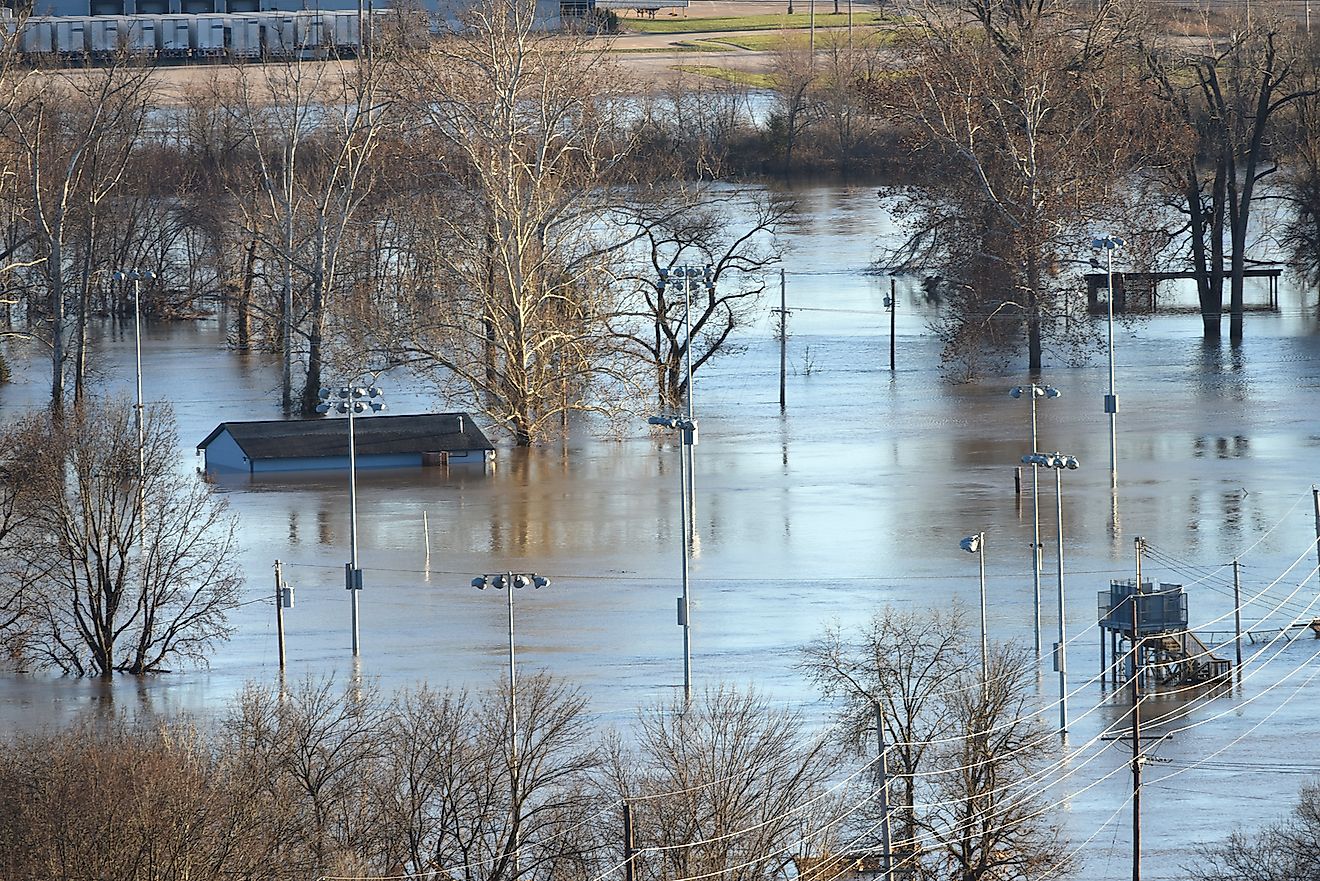
- Eastern, Southeastern and Midwestern states are more prone to flooding in the US, as well as those located directly on the west coast.
- Every year between 30 and 180 people die in US floods, and billion of dollars of damage result from major hurricanes when they hit.
- There are three types of floods, coastal, river, and flash floods. Flash floods cause the most deaths.
A flood happens when a body of water rises and overflows onto what is normally dry land. When a flood turns a forest into a swamp and no one is living there, (save maybe a crafty beaver or two), it is not cause for much alarm. When a flood hits human homes, however, this is a much more serious matter.
In the US, floods drive out some 75,000 Americans from their homes every year, causing a lot of damage and loss. Floods can happen all across the country, but there are some areas that bear the brunt of it. Very generally speaking, according to records kept by the National Flood Insurance Program from 1970 to 2018, the Eastern US experiences more floods-or at least, files more insurance claims related to flooding- than the rest of the country. There is also substantial flooding that occurs on the West coast in Washington State, Oregon, and California. The major bulk of flooding in the US, however, happens along the coastal regions of the East and Southeast, and in the Eastern interior states. Basically all states starting on the East coast and going West to North Dakota, South Dakota, Nebraska, Kansas, Oklahoma, and Texas experience the majority of flooding in the country, as well as Colorado.
There are many types of floods that hit the US, causing millions in damage each year.
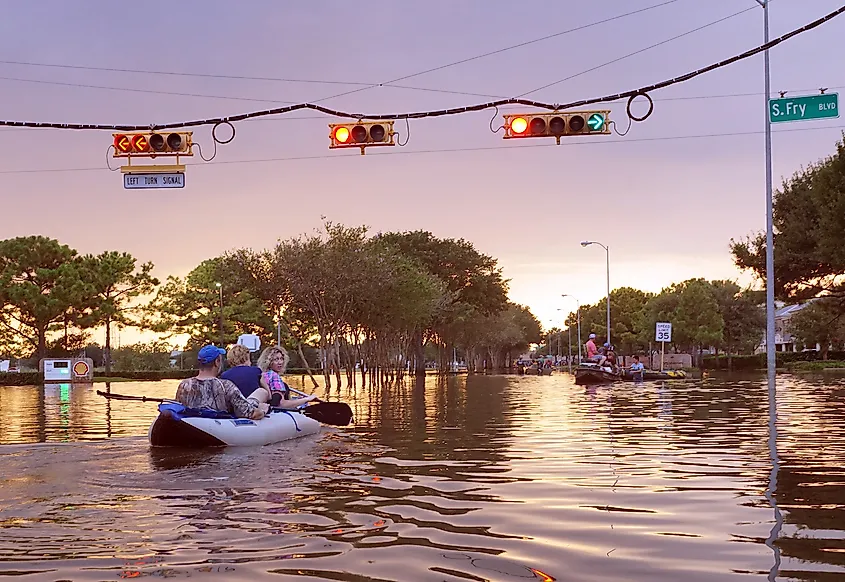
Types Of Floods
According to the Weather Channel, urban areas in the US tend to be more prone to flooding than others. There is a simple reason for this: they are home to more pavement. When the ground is not paved over, excess water can be soaked into the soil, up to a point. Some urban areas that receive a lot of flooding in the US include San Antonio, Dallas, Fort Worth, Atlanta, Chicago, and Detroit, to name a few.
There are three types of floods that can occur in the US: coastal floods, flash floods, and river floods. Coastal floods happen when high tides bring in more water than usual, or storms come ashore from out at sea, causing high winds and extreme rainfall.
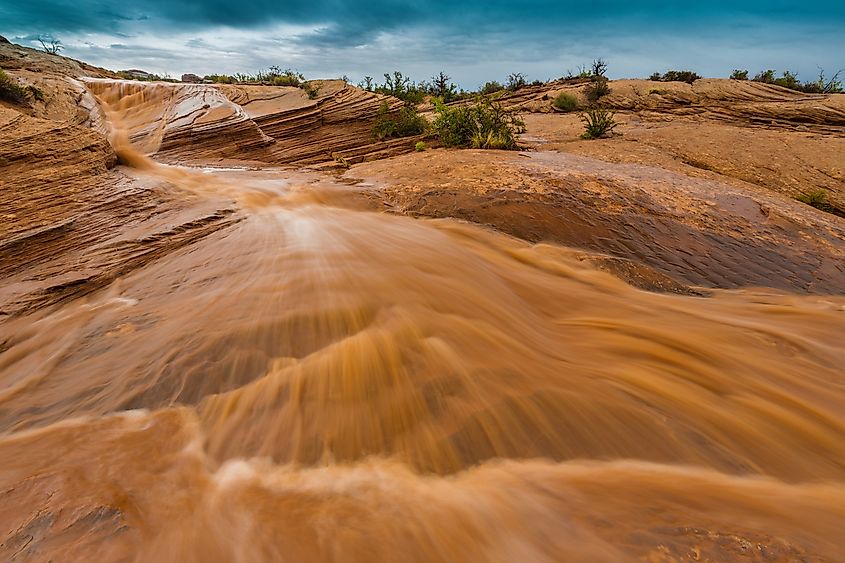
Flash floods happen when excessive rainfall causes runoff to suddenly join streams or other channels that are normally dry. These waterways then rise rapidly in height, surprising residents nearby. These types of floods happen more often in areas that have a dry climate and that are covered in rocky terrain. In these places, the water cannot be absorbed easily by the ground and so it causes streams to overflow.
River floods happen more often in areas that are home to large rivers and wetter climates. Both melting snow and runoff from storms can cause rivers to swell. Ice jams that act as a sudden dam to stop water from flowing where it should can do this as well.
According to the Weather Channel, a lot of river flooding happens along the Red River between northwest Minnesotaa and eastern North Dakota. This type of flood is also prevalent in the Appalachians and the East.
Flash floods tend to happen in the Midwest in summer time, but they can also occur in other places.
Areas that experience more than their fair share of coastal flooding include Tampa, Florida, Charleston, South Carolina, Long Island, and New Jersey.
Damage In Dollars
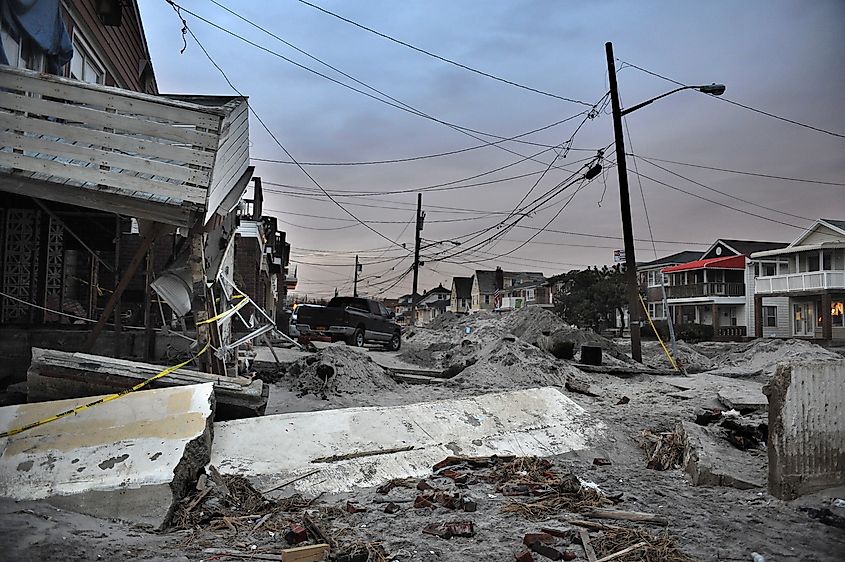
Since 1970, the National Flood Insurance Program has seen people file 2.4 millions flood claims. According to Statista.com, in 2019, floods in the US caused approximately 3.75 billion dollars in damage. It is estimated that over the next 15 years, states that are prone to flooding have billions of dollars of property that could be destroyed by incoming flooding. New Jersey, California, and Florida top this list with $10.4 billion, $10.3 billion, and $7.9 billion worth of property at stake, respectively.
It is well known that major floods can cause massive damage. In August of 2005, Hurricane Katrina battered New Orleans as a Category 5 tropical cyclone. This enormous storm caused $125 billion in damage, and killed 1,200 people who could not be evacuated early enough to higher ground, to avoid the storm. This storm destroyed the lives of many people and took many treasured landmarks in New Orleans, as the costliest tropical cyclone ever recorded.
In 2012, another example of ferocious storm hit the US, this time on the East coast, in the form of Hurricane Sandy. This giant Atlantic hurricane resulted in $70 billion worth of damage. Hurricanes Harvey and Maria were even bigger, in 2017.
Flood Prevention
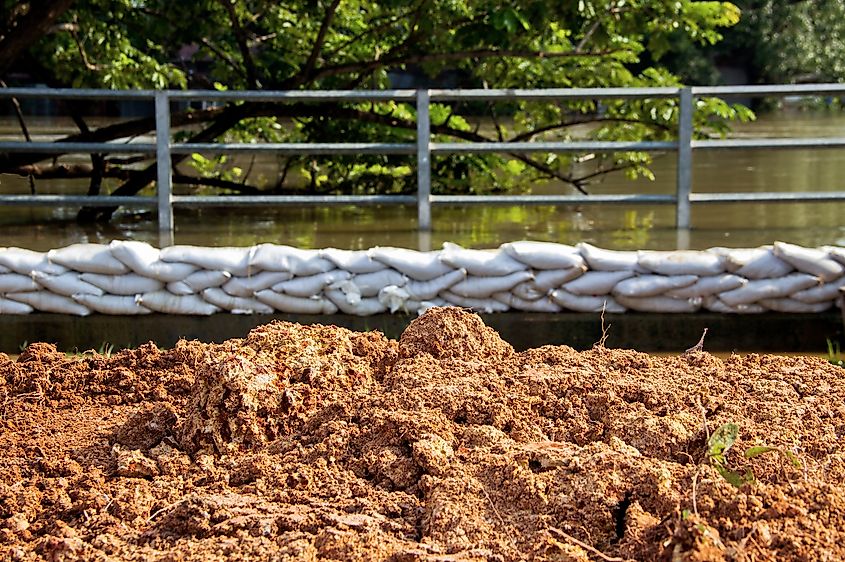
The most you can do on a personal level to prevent floods is to ensure you are ready for one, should one strike.
The US National Safety Council suggests you know how far you are from rivers, streams and dams, in order to stay safe. When it is raining heavily, you should avoid places that are underground such as basements, underground parking garages and underpasses, as each can flood, making it hard to escape to safety. It is also advised that you avoid hiking or camping if thunderstorms are predicted. If you live where floods do occur, develop an evacuation plan with your family. If you are caught in a flood, do not walk in any water that is deeper than your ankles, as you can be swept off your feet in as little as 6 inches of rain. You should also turn off the electricity so that you will not be electrocuted.
In any given year in the US, anywhere between about 30 and 180 people die from being trapped in a flood. Flash floods kill the most people out of all weather-related incidents in the US. According to American Rivers.org, about 17% of all urban land in the US is situated in a high-risk flood zone. Before purchasing a house, check out the weather history of the area, to see what risks may accompany it.











